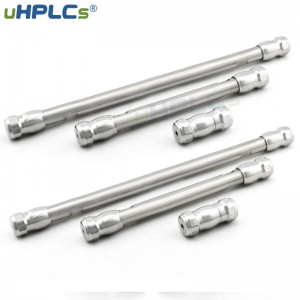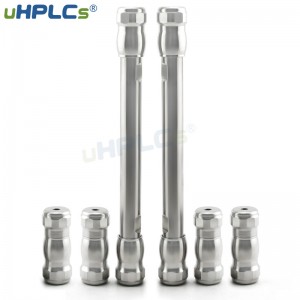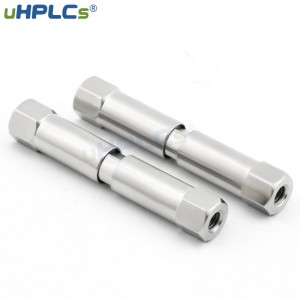Many users question how long an LC column should be re-equilibrated after a solvent gradient elution separation. Here we show satisfactory results for short re-equilibration cycles for reversed-phase and HILIC separations.
The question of how long to re-equilibrate an LC column after a solvent gradient elution separation is often raised and discussed by LC users. In this paper, we discuss the details based on recent research and show that even for HILIC separations, satisfactory results can be obtained within a short re-equilibration cycle of two column volume orders of magnitude.
I. Core concepts
When using LC in solvent gradient elution mode, there must be a period of time, usually at the end of the analysis, when the mobile phase used in the first part of the solvent gradient flows through the LC column in preparation for The analysis follows. This period is often referred to as the re-equilibration time. An exponential profile is created due to flushing the instrument components between the pump system outlet and the column inlet (for example, mixers, connecting tubes and feeder loops). Recognition of the occurrence of this exponential flush is critical to understanding column re-equilibration in the context of solvent gradient elution. It is a matter of the physical behaviour of the system that the mobile phase of composition φ i does not start to flow through the column again until long after the gradient procedure has been completed.
II. What does it mean to “re-equilibrate” a column?
Complete re-equilibration refers to a state of the column where an increase in the re-equilibration time (t re-eq) does not further affect the retention time of the analytes separated in the subsequent gradient elution separation. In other words, this state is where the column is equilibrated with the initial mobile phase (φ i ) used in the gradient.
The equilibrium time of some columns is also affected by the bonding phase. Cyano-bonding has a unique selectivity towards polar compounds and is more suitable for normal phase gradient separations than bare silica. The cyano functional group is a strong dipole and can interact with other dipoles or induce dipoles on the solute. These phases also exhibit moderate hydrophobicity due to the alkyl linkage.Due to the fast equilibration time of the CN bonded phase, it is the best choice for gradient elution in the normal phase mode. The CN phase can be a less polar alternative to the Si phase. HSUSHA CN cyanide-based columns are suitable for analysing double bonded compounds, circulating antidepressants etc.
Partial, reproducible re-equilibration: This term refers to the state in which the column is not fully equilibrated with the initial mobile phase; however, highly reproducible separations can be obtained as long as the re-equilibration time used between gradient elution separations is highly accurate.
The distinction between these two equilibrium states is important because 1) it can take a long time (in some cases several hours) to reach a fully re-equilibrated state, and 2) in many cases, it is not necessary to fully re-equilibrate the column to obtain beneficial analytical results. In these cases, a high degree of reproducibility of the separation (as measured, for example, by the accuracy of the retention time) is usually more important than complete re-equilibration of the liquid chromatography column, which can significantly improve throughput and reduce analytical costs if the analysis time can be reduced by using a re-equilibration time that is not unnecessarily long.
III. Conclusions
We have learnt something from a detailed study of the re-equilibration of reversed-phase columns: if we summarise the extensive work done during the first in-depth study of the subject of re-equilibration of reversed-phase columns after solvent gradient elution, we end up with two main conclusions: after reaching flush, using the initial mobile phase used in the gradient, only one or two equilibrated columns are needed to obtain highly reproducible gradient elution separation.
Progress towards complete equilibrium can be influenced by factors such as buffer concentration and pH, especially for ionic analytes.
Post time: Aug-06-2022









